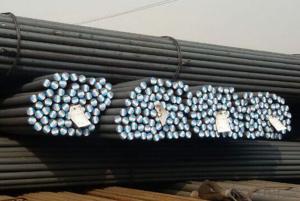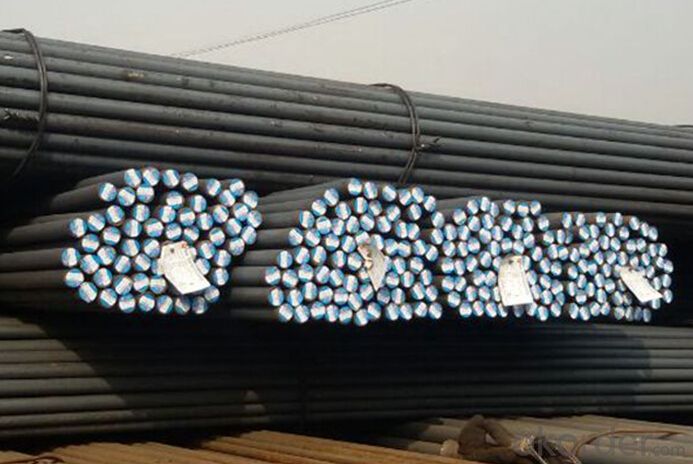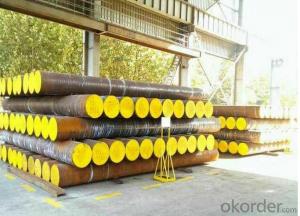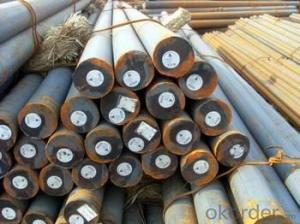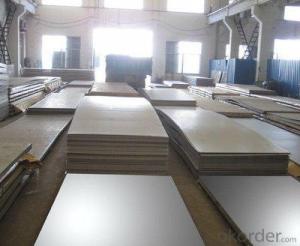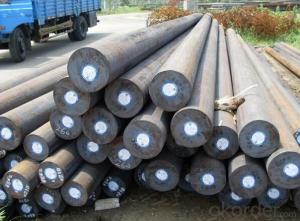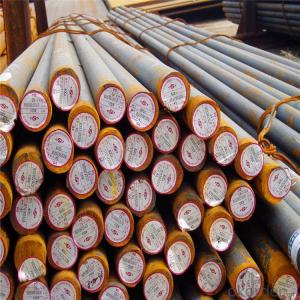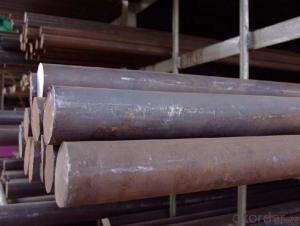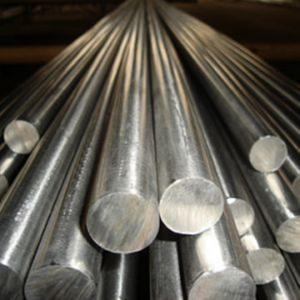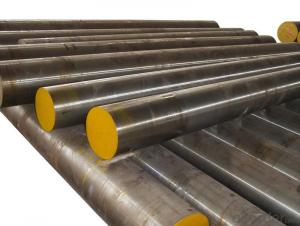Grade SAE 1045 High Carbon Steel Price Hot Rolled
- Loading Port:
- Tianjin
- Payment Terms:
- TT OR LC
- Min Order Qty:
- 3 m.t.
- Supply Capability:
- 10000 m.t./month
OKorder Service Pledge
OKorder Financial Service
You Might Also Like
Specification
Product Description:
Material | 1045 | Round bar | Dia(mm) | 16-300 |
Process | EAF + LF + VD + Forged + Heat Treatment (optional) | Length (mm) | Max 12000 | |
Heat treatment | Normalized / Annealed / Quenched / tempered | Flat bar | Thickness(mm) | 8-500 |
Delivery condition | Hot forged +Rough machined (black surface after Q/T)+ Turned (optional) | Width(mm) | 70-200 | |
Test | Ultrasonic test according to SEP 1921-84 D/d | Length (mm) | Max 12000 | |
OKorder is offering Grade SAE1045 carbon steel at great prices with worldwide shipping. Our supplier is a world-class manufacturer of steel, with our products utilized the world over. OKorder annually supplies products to European, North American and Asian markets. We provide quotations within 24 hours of receiving an inquiry and guarantee competitive prices.
Product Applications:
Grade SAE1045 carbon Steel are ideal for structural applications and are widely used in the construction of buildings and bridges, and the manufacturing, petrochemical, and transportation industries.
Product Advantages:
OKorder's Grade SAE1045 carbon steel are durable, strong, and resist corrosion.
Chemical Composition
C | Si | Mn | S | P | Cr | Ni | Mo |
0.42~0.50 | ≤0.40 | 0.50~0.80 | ≤0.045 | ≤0.045 | ≤0.40 | ≤0.40 | ≤0.10 |
Packaging & Delivery of Carbon Steel
Standard seaworthy packing or as customer required
Delivery time:
Within 30 days after order is confirmed.
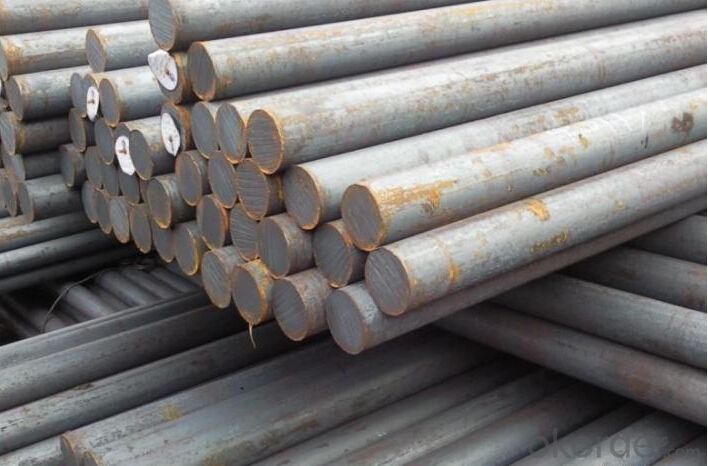
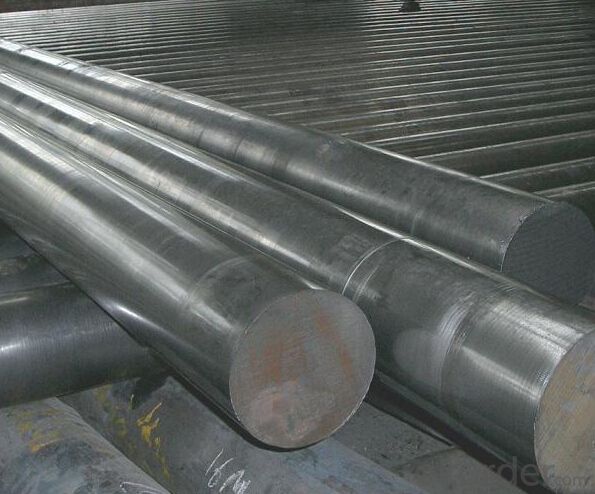
- Q: How does special steel ensure product reliability?
- Special steel is specifically designed and manufactured to possess superior qualities that enhance product reliability. One of the key factors that contributes to the reliability of special steel is its exceptional strength and durability. This type of steel is engineered to withstand high levels of stress, pressure, and temperature, ensuring that it can perform reliably even in challenging conditions. Special steel also offers excellent resistance to corrosion, wear, and fatigue. This is achieved through the addition of various alloying elements and careful heat treatment processes. The enhanced resistance to corrosion and wear minimizes the risk of degradation and failure, which in turn enhances the reliability of the product. Moreover, special steel is known for its exceptional dimensional stability and accuracy. This means that it maintains its shape and size under various operating conditions, minimizing the potential for dimensional changes that could affect the overall performance and reliability of the product. Another aspect that makes special steel reliable is its consistent and uniform composition. The manufacturing process of special steel ensures that it has a homogeneous and controlled structure, which leads to predictable and reliable mechanical properties. This allows designers and engineers to accurately predict the behavior and performance of the steel, thus increasing the reliability of the final product. Furthermore, special steel is often subjected to stringent quality control measures throughout the manufacturing process. This ensures that the steel meets or exceeds industry standards and specifications. By adhering to these strict quality standards, special steel manufacturers can guarantee a high level of product reliability. In conclusion, special steel ensures product reliability by providing exceptional strength, durability, resistance to corrosion and wear, dimensional stability, uniform composition, and strict quality control measures. These features collectively contribute to the reliable performance of products made from special steel, making it a preferred choice in industries where reliability is paramount.
- Q: What are the different joining methods used for special steel?
- The different joining methods used for special steel include welding, brazing, soldering, and mechanical fastening.
- Q: What are the different surface protection methods used for special steel?
- There are several surface protection methods used for special steel to enhance its durability and resistance to various forms of damage. One commonly used method is galvanizing, where a layer of zinc is applied to the surface of the steel. This helps to protect the steel from corrosion and rusting, increasing its lifespan and maintaining its appearance. Galvanizing can be done through hot-dip galvanizing or electroplating, depending on the specific requirements of the steel. Another method is powder coating, which involves applying a dry powder to the steel surface and then curing it in high temperatures. This creates a protective layer that is resistant to chipping, scratching, and fading. Powder coating is often used for aesthetic purposes as it provides a wide range of color options and can improve the steel's appearance. Additionally, special steel can be protected using various types of paints and coatings. These coatings can be applied through spray or brush, and they provide a barrier against corrosion, chemicals, and UV radiation. Epoxy, polyurethane, and acrylic coatings are commonly used for this purpose, depending on the specific needs and environment the steel will be exposed to. Furthermore, stainless steel is inherently resistant to corrosion due to its composition, but it can be further protected by passivation. Passivation is a chemical treatment that removes iron particles from the surface, preventing corrosion and enhancing the steel's resistance to staining and pitting. Lastly, special steel can also be protected by applying a layer of ceramic or enamel coating. These coatings provide a high level of resistance to heat, chemicals, and physical abrasion. They can be applied through spraying or dipping and are often used in environments where the steel will be exposed to extreme conditions or aggressive substances. In conclusion, the different surface protection methods used for special steel include galvanizing, powder coating, painting, passivation, and ceramic/enamel coating. These methods aim to enhance the steel's durability, resistance to corrosion, and overall lifespan, ensuring that it can withstand various environmental factors and maintain its structural integrity.
- Q: Can special steel be used in mining applications?
- Yes, special steel can be used in mining applications. Special steel, also known as alloy steel, is specifically designed to have enhanced properties such as increased strength, durability, and resistance to wear and corrosion. These properties make it highly suitable for various mining applications where the equipment and machinery are subjected to extreme conditions, including heavy loads, abrasive materials, and exposure to water or chemicals. In mining, special steel is commonly used for manufacturing drill bits, cutting tools, crushing and grinding equipment, conveyor belts, and structural components of mining machinery. For example, drill bits made from special steel alloys have improved hardness and toughness, allowing them to effectively penetrate hard rock formations. Similarly, crushing and grinding equipment that utilizes special steel components can withstand the high stress and impact forces encountered during the extraction and processing of minerals. Moreover, special steel alloys provide better resistance to corrosion and wear, which are common challenges in mining environments. This helps to extend the lifespan of mining equipment, reduce maintenance costs, and enhance operational efficiency. Additionally, special steel can be tailored to meet specific requirements, allowing manufacturers to optimize the performance of mining equipment for different mining applications and conditions. Overall, the use of special steel in mining applications offers numerous benefits in terms of improved performance, durability, and cost-effectiveness. Its unique properties make it an essential material in mining operations, enabling the extraction and processing of minerals in a more efficient and sustainable manner.
- Q: What are the main characteristics of spring steel?
- Spring steel is a type of high-carbon steel that is specifically designed to possess excellent elasticity and resilience. It is primarily known for its ability to return to its original shape after being bent or deformed, making it ideal for applications where repeated and controlled deflection is required. The main characteristics of spring steel include: 1. High Yield Strength: Spring steel is characterized by its high yield strength, which refers to the amount of stress it can withstand before permanent deformation occurs. This allows it to bear heavy loads and resist bending or breaking under pressure. 2. Excellent Elasticity: One of the most significant characteristics of spring steel is its exceptional elasticity. It can be flexed, twisted, or stretched without permanently deforming, and once the force is released, it returns to its original shape. This property is crucial for applications requiring constant and repetitive motion. 3. Superior Fatigue Resistance: Spring steel is exceptionally resistant to fatigue, meaning it can endure millions of cycles of stress without failing. This characteristic is crucial for products subjected to continuous and repetitive loads, such as springs in automotive suspensions or industrial machinery. 4. Good Hardness and Wear Resistance: Spring steel is typically hardened to enhance its wear resistance. This allows it to withstand abrasion and deformation under harsh conditions, making it suitable for applications that involve friction or impact, such as cutting tools or automotive components. 5. Excellent Formability: Spring steel can be easily formed into various shapes and sizes, making it highly versatile for different applications. It can be cold-drawn, rolled, or heat-treated to achieve specific mechanical properties, allowing manufacturers to customize its characteristics based on their specific requirements. Overall, the main characteristics of spring steel are its high yield strength, excellent elasticity, superior fatigue resistance, good hardness and wear resistance, and exceptional formability. These qualities make it a vital material in a wide range of industries, including automotive, aerospace, construction, and manufacturing.
- Q: How does special steel contribute to the packaging aftermarket industry?
- Special steel plays a significant role in the packaging aftermarket industry by offering various benefits that contribute to the overall efficiency and quality of packaging processes. Firstly, special steel is known for its exceptional strength and durability, which makes it ideal for manufacturing packaging machinery and equipment. This robustness ensures that the machinery can withstand the rigorous demands of the industry, leading to increased reliability and reduced downtime. Additionally, special steel possesses excellent corrosion resistance properties, making it highly suitable for packaging applications that involve exposure to moisture, chemicals, or extreme temperatures. This resistance to corrosion helps to extend the lifespan of packaging equipment and prevents degradation, ultimately reducing maintenance costs and enhancing the overall efficiency of the packaging aftermarket industry. Moreover, special steel can be tailored to meet specific requirements, allowing for the production of customized packaging solutions. This flexibility and versatility enable manufacturers to create innovative designs that enhance product protection, optimize space utilization, and improve transportation logistics. For instance, special steel can be utilized to create lightweight yet sturdy packaging materials, reducing shipping costs and minimizing the environmental impact associated with packaging waste. Furthermore, special steel possesses excellent machinability and weldability, facilitating the fabrication of intricate packaging components with high precision. This capability enables manufacturers to produce packaging solutions that are tailored to specific product dimensions, ensuring a perfect fit and optimal protection during transit. In conclusion, special steel plays a crucial role in the packaging aftermarket industry by offering strength, durability, corrosion resistance, customization options, and excellent machinability. These qualities contribute to the overall efficiency, reliability, and quality of packaging processes, ultimately benefiting both manufacturers and consumers.
- Q: Can special steel be used in the beverage manufacturing industry?
- Yes, special steel can be used in the beverage manufacturing industry. Special steel, such as stainless steel, is commonly used in beverage processing equipment due to its corrosion resistance, hygienic properties, and durability. It is particularly suitable for manufacturing tanks, pipes, valves, and other components that come into contact with beverages, ensuring a high level of safety and maintaining the quality of the products.
- Q: Can special steel be used in the wood manufacturing industry?
- Yes, special steel can be used in the wood manufacturing industry. Special steel, such as tool steel, can be used to make cutting tools, blades, and other equipment used in wood processing and manufacturing. These steel tools offer high strength, durability, and resistance to wear, enhancing the performance and longevity of wood manufacturing machinery.
- Q: How does special steel contribute to the automotive suspension industry?
- Enhanced strength, durability, and performance are essential qualities that special steel brings to the automotive suspension industry. Suspension components greatly benefit from special steel alloys, particularly high-strength low-alloy (HSLA) steel, which are tailor-made to withstand the demanding conditions of the suspension system. This ensures optimal performance and safety. One of the primary advantages of special steel in the automotive suspension industry lies in its outstanding strength-to-weight ratio. Suspension components crafted from special steel alloys can endure heavy loads without succumbing to deformation, resulting in improved vehicle handling, stability, and overall performance. Its strength also contributes to increased durability, reducing the likelihood of premature component failure and extending the lifespan of the suspension system. Moreover, special steel offers superb fatigue resistance, a critical characteristic in the suspension industry where components experience repeated stress and vibrations. This fatigue resistance prevents the occurrence of cracks and fractures in suspension parts, guaranteeing dependable and secure operation even in challenging conditions. Additionally, special steel alloys provide superior corrosion resistance, safeguarding suspension components from the damaging effects of moisture, salt, and other environmental factors. This corrosion resistance extends the lifespan of the suspension system, decreasing maintenance costs, and enhancing overall reliability. Furthermore, special steel allows for improved design flexibility in suspension components. Its unique properties, such as high formability and weldability, enable manufacturers to create intricate and lightweight designs, resulting in more efficient suspension systems. These lightweight designs not only contribute to fuel efficiency and reduced emissions but also enhance the overall driving experience by improving vehicle agility and responsiveness. In summary, special steel plays an indispensable role in the automotive suspension industry, delivering enhanced strength, durability, and performance to suspension components. Its exceptional strength-to-weight ratio, fatigue resistance, corrosion resistance, and design flexibility contribute to improved handling, stability, safety, and overall vehicle performance. Through its unique properties, special steel ensures reliable and efficient suspension systems, satisfying the demanding requirements of the automotive industry.
- Q: What are the properties of aluminum alloys?
- Aluminum alloys possess several important properties, including lightweight yet strong and durable characteristics, excellent corrosion resistance, high thermal and electrical conductivity, and good formability for various shaping processes. They also exhibit good machinability, weldability, and recyclability, making them highly versatile in a wide range of applications across industries such as aerospace, transportation, construction, and packaging.
Send your message to us
Grade SAE 1045 High Carbon Steel Price Hot Rolled
- Loading Port:
- Tianjin
- Payment Terms:
- TT OR LC
- Min Order Qty:
- 3 m.t.
- Supply Capability:
- 10000 m.t./month
OKorder Service Pledge
OKorder Financial Service
Similar products
Hot products
Hot Searches
Related keywords
